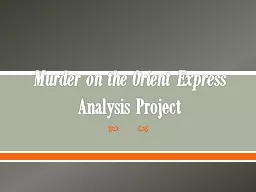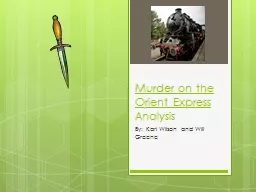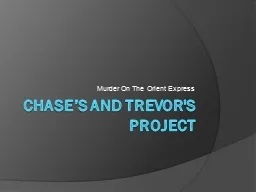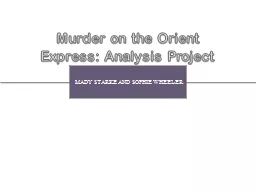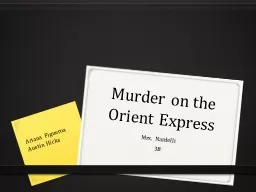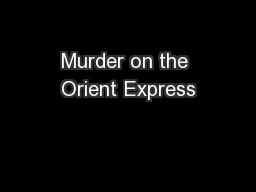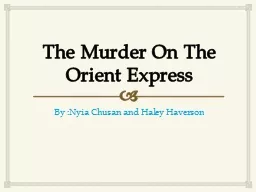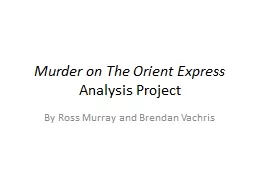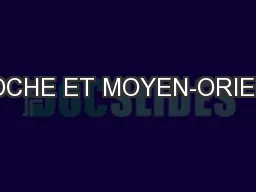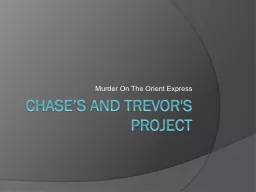PPT-Murder on the Orient Express
Author : ellena-manuel | Published Date : 2018-03-14
Analysis Project Unfamiliar Vocab Concocter to devise make up or prepare Credo any creed or formula of belief Pother commotion Expenditure the act of expending
Presentation Embed Code
Download Presentation
Download Presentation The PPT/PDF document "Murder on the Orient Express" is the property of its rightful owner. Permission is granted to download and print the materials on this website for personal, non-commercial use only, and to display it on your personal computer provided you do not modify the materials and that you retain all copyright notices contained in the materials. By downloading content from our website, you accept the terms of this agreement.
Murder on the Orient Express: Transcript
Download Rules Of Document
"Murder on the Orient Express"The content belongs to its owner. You may download and print it for personal use, without modification, and keep all copyright notices. By downloading, you agree to these terms.
Related Documents

